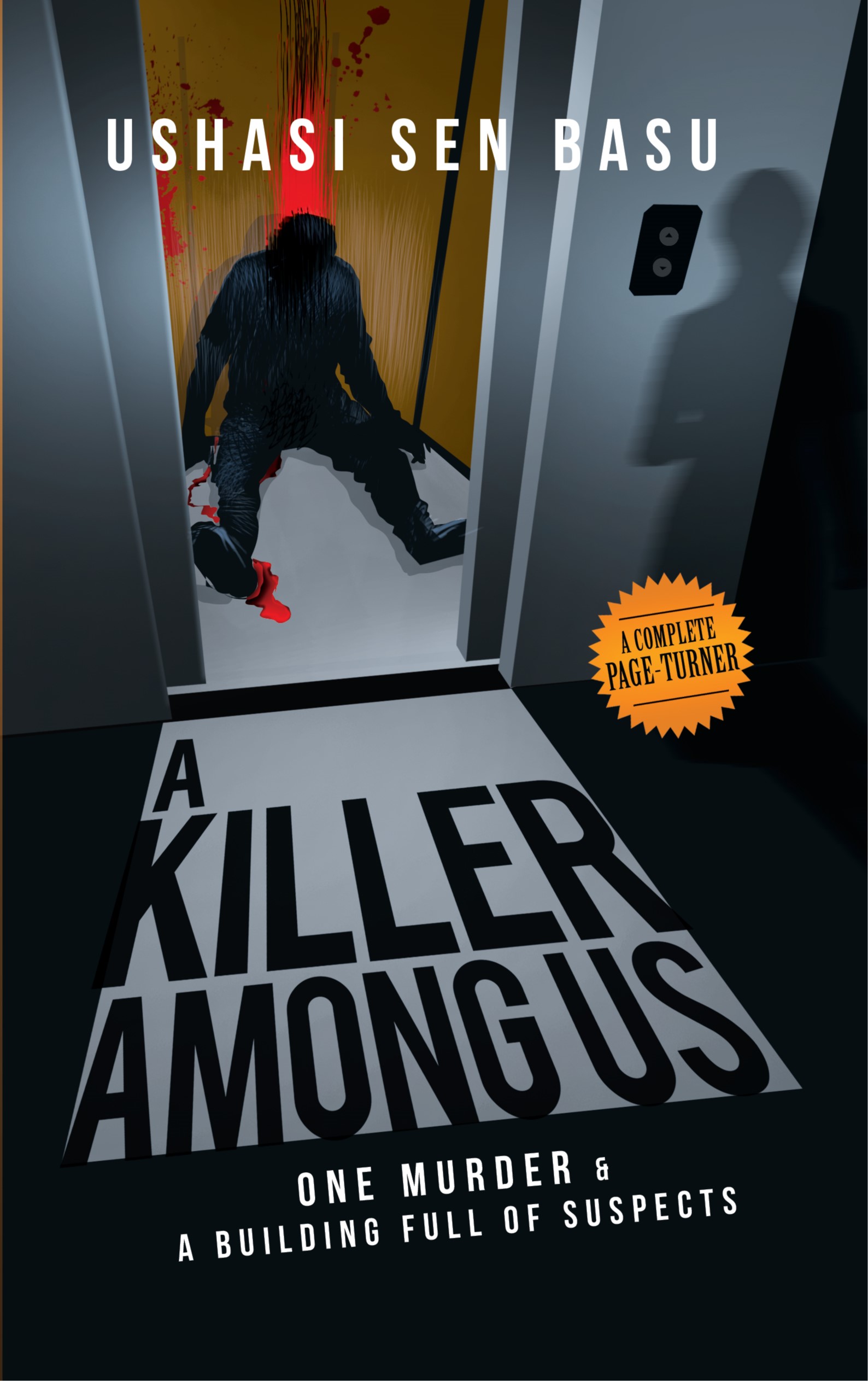Crime writing is quite a tricky genre since it involves the reader and the writer going head to head in a battle of wits. I thought it might be helpful for me to pass on some of the lessons I learned while writing this book. So, I shall give you six quick tips on crime writing today. Why not 10? Because who has the attention span for that many? Certainly not me.
Ok, so here we go:
- Before you start anything, I would recommend you read extensively in the genre to know how it’s done. This will not only give you an idea about the conventions of the genre and the things that work, but it will also give you an idea about the stereotypes and clichés you might want to avoid. Don’t go sneakily stealing any ideas, though, because readers will catch you!
- There are several kinds of crime writing. You have to decide which sort fits you the best.
There is the more conventional ‘whodunit’ and then there is the ‘howcatchem’. There are examples galore for the first kind. The second type is much harder to pull off, but if done well, can be quite wonderful. Higashino’s ‘Devotion of Suspect X’ is a hugely popular example of this category. Hitchcock’s movie based on the play ‘Dial M for Murder’ is another example of ‘Howcatchem’.
There are other ways of classifying crime writing. You have the ‘cosy mystery’, where a crime is set in a tranquil, often middle-class setting. There are no graphic details of the crime, so a reader can read it over her coffee and cake. My own book ‘A Killer Among Us’ falls in that category. Of course, Agatha Christie was the master in this genre, especially her Miss Marple series.
The opposite of this are the ‘hardboiled’ crime stories. Lots of gruesome details, psychopathic killers, the book is absolutely littered with bodies by the end of it. This usually deals with serial killers and rapists. All of the Nordic noir genre falls under ‘Hardboiled’, for example, ‘The Hypnotist’ by Lars Kepler.
Then of course you have to decide how you’d like the crime to be solved. If you have enough inside info about police procedure (please do not try it if not) then ‘police procedurals’ could be your game. This will follow the police personnel who have been put on the case and will need a lot of research for that ring of authenticity.
Then there is the private detective sub-genre, such as Hercule Poirot, Sherlock Holmes, Cormoran Strike, Phelu Da, Byomkesh Bakshi, etc. For this too, a fair amount of research is required for the uninitiated. I’m assuming most writers (unless they are killers themselves, or ex-cops or at least detectives) start out wet behind the ears so, research is key, coupled with imagination and an understanding of human psychology.
There are amateur sleuths, again like my characters in AKAU, who are thrown into a situation where they have to solve the crime for personal reasons of their own, such as to exonerate themselves.
There are a few more types, of course, like the crime novel written from the point of view of the criminal or courtroom dramas.
I think playing around with POV is a lot of fun and I do that a lot in my writing. Sometimes it goes down well with readers sometimes it doesn’t, but at least I get to have fun with writing and doing something new. Adding an original element to a genre that has been done to death (haha, pun intended) will always be valuable, regardless of whether some readers think it works or not.
- This brings me to my next point. The mystery genre is relatively young. It became a recognised genre around Edgar Allen Poe’s time in the early 19th century and has become wildly popular since then. He wrote ‘The Murder in Rue Morgue’ and that kickstarted the rise in the popularity of this kind of writing. Every possible kind of crime, the reason for committing it, kind of criminal, red herring, etc has been explored in full and published, it is fair to say. Every kind of combination and permutation of perpetrators has been used, from a whole trainload of passengers in (spoiler alert) one of Christie’s books to the murder actually being a suicide all along. Given that crime is such a well-explored genre, and that this is the one genre in which the reader’s wits are pitted directly against the author’s, it is essential that you bring some freshness to the elements of the story.
- There should be a compelling hook. The crime should occur towards the beginning of the story, and there should be something unusual about it; so it hooks the reader and intrigues him. Especially for lesser-known authors, this will tip the balance in favour of a person reading the rest of the book.
- The setting should have an atmosphere. Think of Sherlock Holmes, creeping around in disguise in the fog, solving his mysteries, with the murderer close at hand. The pages absolutely drip atmosphere and suspense.
In a cosy mystery, the atmosphere need not be sinister, in fact, quite the opposite. But in fact, if you build a world that seems very cosy or mundane the crime will strike an even more sinister note, giving your reader a pleasurable shiver down the spine.
- Write your characters with care, make them lifelike. The protagonist, your crime solver, should be someone the readers root for. The readers should be invested in him/her and want him to get to his goal. By that, I don’t mean, he should be a paragon of virtue. Depending on the kind of crime novel you are writing you should make him flawed, to allow for realism and depth. Yet, in the tussle between protagonist and antagonist, you should definitely make sure it is the protagonist who has the reader’s sympathies more. Then again, you could try it the other way, it might be interesting.
So, then you have the antagonist. Give the antagonist(s) a backstory, a logical reason for his/her doing what she’s done. Make a decision about how much you would like the readers to hate the antagonist. And lay the groundwork accordingly, because ultimately her being caught should give the audience pleasure.
- As I mentioned earlier, more than in any other literary genre, the readers consider themselves in active competition against the author. So, in the spirit of fair play in that competition, an author must leave a trail of clues throughout the book, so the readers, once the killer is revealed, can look back and say, ‘yes, I was given a sporting chance’. However, readers will also not be pleased if the clues lead them to guess the murderer too easily; and let’s be honest, it’s in everyone’s interest if the author wins this mental tussle. The author must then leave quite a few red herrings during the course of the story, which misdirects the readers as well as the investigating character.
- Just a quick note about pace. The pace is very important in crime writing. Since people are hopefully on tenterhooks to know who the perpetrator is and how it all happened, they will thank you for keeping the pace brisk. This also helps in maintaining the tension of the novel and will prevent it from going slack. One can pick up the pace by keeping one’s sentences terse, by cutting down on dialogue and descriptions. That said, extreme tension kept for long durations will be stressful for readers and it’s important to alternate this with slower pacing so the readers can take a breather and prepare themselves for the next surprise or tense scene. You can use the slower-paced sections for character development, dialogue between characters and descriptions of the setting.
- Finally, try to end the novel with a knockout punch. It’s good if there is some surprising revelation in the last chapter (though the seeds should have been there, albeit well-hidden, earlier). Also, tie up all the loose threads and put a pretty bow on it.
And voila! You’ve got a cracking mystery on your hands.
I will put in a disclaimer here that I do break one or two of these rules in my own writing, but that is permissible I think to break away from clichés, predictability, and stereotypes. Because you know…yawn.
Hope to read some more cracking mysteries from people out there soon!
 Ushasi Sen Basu is the author of 'A Killer Among Us'
Ushasi Sen Basu is the author of 'A Killer Among Us'
Blurb: What can strip away the polite veneer of an apartment complex and lay bare a world of secrets and lies?
The discovery of a stranger’s body on its premises.
Ira Dutta is an ambitious journalist who dislikes the ‘middle-class stagnation’ of Panorama Apartments. Nandana Roy is a stay-at-home mom, in the throes of an early mid-life crisis. Mrs. Ghoshal is an octogenarian whose life revolves around television soaps. Just three, among many, seemingly unconnected lives―until the murdered man is found in their building lift one night.
The facade of neighbourliness comes undone as suspicion falls on each resident in turn. Who is the stranger? Why was he killed? And who among them is the culprit?


Comments